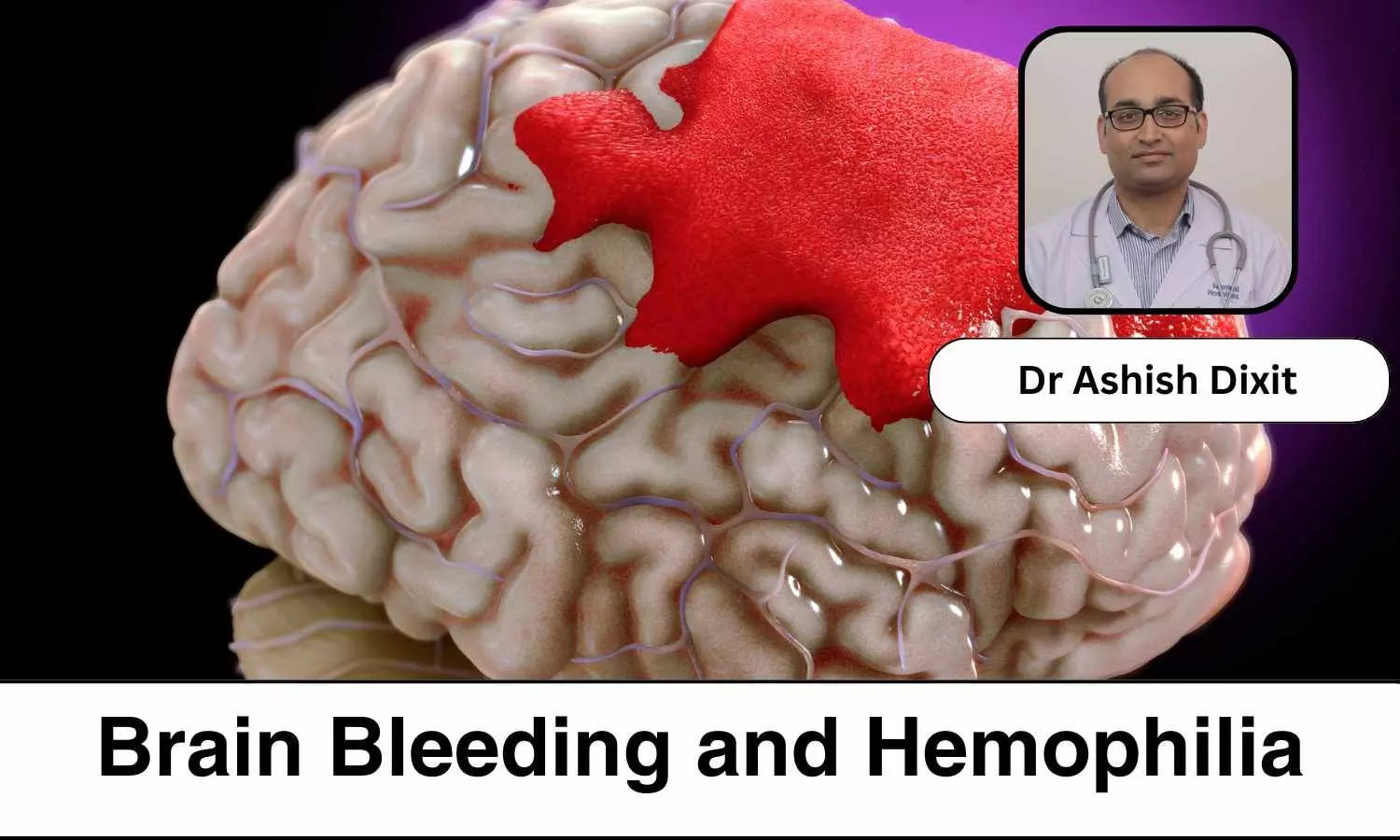Hemophilia, a genetic disorder, affects the body’s ability to form blood clots properly. While it is often associated with bleeding in joints and muscles, one of the most serious complications is bleeding in the brain, called intracranial hemorrhage or cerebral hemorrhage. This condition can occur in both children and adults with hemophilia and poses significant risks to their health and well-being.
Two major types of hemophilia are hemophilia A and hemophilia B, which are caused by a deficiency of clotting factors VIII and IX, respectively. Without these clotting factors, even minor injuries can lead to prolonged bleeding.
Although hemophilia has existed since birth, the severity of the condition can vary and depending on the severity, it is classified as mild, moderate or severe hemophilia. Severe hemophilia can manifest with bleeding within the first year of life; However, moderate and mild hemophilia may not occur until later in life.
The Risks from Brain Bleeds
In people with hemophilia, spontaneous bleeding can occur anywhere in the body, including the brain. Cerebral hemorrhages can be the result of trauma, but they can also occur spontaneously and without an apparent cause. Children with hemophilia may experience cerebral hemorrhage during birth or due to minor head injuries common during childhood activities.
In adults, cerebral hemorrhages can be caused by trauma, but they can also occur for no apparent reason.
Recognize The Symptoms
Symptoms of a cerebral hemorrhage in hemophilia can vary depending on the severity and location of the hemorrhage. In infants and young children, signs may include excessive crying, vomiting, irritability, and behavioral changes.
In older children and adults, symptoms may include severe headache, nausea, vomiting, weakness or numbness on one side of the body, seizures, or loss of consciousness.
diagnosis And Treatment
Diagnosing a cerebral hemorrhage in a person with hemophilia requires immediate medical attention. To confirm the diagnosis, a combination of imaging tests such as CT scans or MRI and blood tests to determine clotting factor levels are usually used. Once diagnosed, treatment aims to stop bleeding, prevent further bleeding, and treat complications.
management And prevention
Treatment of cerebral hemorrhage in hemophilia requires a multidisciplinary approach involving hematologists, neurologists and other specialists. Treatment may include administration of clotting factor concentrates to replenish missing clotting factors and stop bleeding. In severe cases, surgery may be necessary to remove the blood clot and relieve pressure on the brain.
Preventing cerebral hemorrhage in people with hemophilia requires careful monitoring and proactive measures. This includes regular check-ups with a hematologist to determine clotting factor levels and adjust treatment if necessary. Additionally, precautions to prevent head injuries, such as wearing helmets during sports or activities, can help reduce the risk of brain hemorrhage.
Understanding the prophylactic factor therapy
Prophylactic factor therapy involves regular infusions of clotting factor concentrates to maintain adequate levels in the bloodstream, effectively mimicking the role of the missing clotting factor. This approach aims to prevent spontaneous bleeding by keeping blood clotting factor levels consistently high, rather than waiting for bleeding episodes to occur.
Maintaining stable levels of clotting factor significantly reduces the risk of spontaneous bleeding, especially in target joints such as knees, elbows and ankles, which are prone to recurrent bleeding and joint damage. Additionally, prophylaxis can improve joint health, mobility, and overall quality of life.
Tailoring Prophylactic Therapies
Prophylactic therapy plans are tailored to each patient and based on factors such as age, hemophilia severity, bleeding history, lifestyle and individual treatment goals. Treatment plans typically include regular infusions of clotting factor concentrates, either weekly, biweekly, or triweekly, to maintain optimal clotting factor levels.
Prophylactic factor therapy can be divided into two main types: primary prophylaxis and secondary prophylaxis (also known as episodic prophylaxis). Primary prophylaxis involves initiating treatment in young children with severe hemophilia before joint damage or significant bleeding episodes occur. In secondary prophylaxis, treatment is started after joint damage or recurrent bleeding occurs in order to prevent further complications.
challenges And Considerations
Despite its effectiveness, prophylactic factor therapy presents challenges, including the need for regular intravenous infusions, the possible development of inhibitors (antibodies that neutralize clotting factors), and the high cost of clotting factor concentrates.
Additionally, adhering to treatment plans and making lifestyle adjustments can be challenging for some patients.
Emphasize Full Care
In addition to prophylactic factor therapy, comprehensive hemophilia care includes a multidisciplinary approach that includes regular medical monitoring, physical therapy, joint protection strategies, and psychosocial support. Educating and empowering patients and families is critical to optimizing treatment outcomes and improving adherence to prophylactic treatment plans.
The Meaning from Training And Support
Living with hemophilia, especially with the risk of serious complications such as cerebral hemorrhage, can be challenging for patients and their families. Education about the disease, its risks, and how to treat and prevent complications is critical. Support groups and resources are available to provide information, guidance and emotional support to individuals and families affected by hemophilia.
Diploma
Cerebral hemorrhage in hemophilia poses a significant risk to both children and adults with the disease. Prophylactic factor therapy is a cornerstone in preventing bleeding episodes and maintaining joint health and quality of life in people with hemophilia. By understanding the risks, taking preventative measures and seeking appropriate medical care, people with hemophilia can better manage their condition and reduce the risk of potentially life-threatening complications such as brain bleeding.
Disclaimer: The views expressed in this article are those of the author and not of Medical Dialogues. The Medical Dialogues editorial/content team did not contribute to the writing/editing/packaging of this article.
